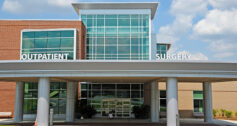
Outpatient surgical volume is expected to grow by 18% over the next decade to nearly 110 million cases, according to the 2023 Impact of Change Forecast report published by Sg2, a Vizient company and healthcare consulting group. The report identified total joint replacement, lumbar/thoracic spine surgeries and revision knee replacements as the top procedures shifting to outpatient environments.
Procedures will continue to flow to lower-cost sites of care — from hospital outpatient departments (HOPDs)to ASCs and, eventually, to office-based suites, according to Sg2. Its report noted that 21% of hammertoe procedures, 17% of spinal decompression/laminectomy surgeries, 11% of carpal tunnel releases and 17% of rotator cuff repairs will be performed in HOPDs or ASCs by 2033.
Total joint replacement procedures are poised to grow rapidly over the next 10 years. Sg2 projects more than 40% increases in primary hip and knee replacements and over 90% growth in shoulder replacements, far outpacing the upward trend of many other orthopedic procedures.
“Aging populations and incidence of osteoarthritis contribute largely to the growth of total joint replacements, but innovations in surgical techniques and implant design that improve outcomes are driving growth in shoulder replacements,” said Donnelle Jageman, Director of Intelligence – Orthopedics at Sg2.
Sg2 projects a 20%-plus 10-year growth for motion preservation procedures such as artificial disc replacements.
“Innovation in these devices is broadening patient eligibility and giving some patients an alternative to spinal fusions,” Jageman said.
She believes office-based procedures are the next frontier in the ambulatory shift. “Techniques like WALANT (wide-awake local anesthesia no tourniquet) have existed for several years, but physicians are still becoming acquainted with and comfortable with the approach,” she added. “Training in these techniques is the first step to growing these services.”
Jageman also believes that WALANT will expand beyond hand surgery and into sports medicine and spine as the development and refinement of micro-surgery tools mature.
“The size and complexity of equipment used in orthopedics has been a barrier for shifting sites of care across the board and continues to hold back the shift to ASCs for joint replacements,” Jageman said. “Manufacturers and health systems are approaching this issue with a problem-solving attitude — build smaller equipment, optimize trays, sterilize offsite and deliver trays on an as-needed basis. The shift to office-based procedures will experience the same roadblocks until the materials and processes are designed with those spaces in mind.”
Site-of-care restrictions continue to be a primary driver of the shift to ASCs, Jageman noted. “In some markets, private payers reimburse physician professional fees at a higher rate in ASCs as part of bundled payments,” she said.
Jageman pointed out that CMS’ decision to add shoulder replacement to the list of procedures that are reimbursable in the ASC setting will lead to an increasing shift in the site of care for these rapidly growing procedures. She said Sg2 will continue to monitor shifts to site-neutral payments, site-of-care restriction policies, ASC ownership and innovations in ASC-specific technology.
“Outpatient orthopedics is an active and dynamic segment of the market as health systems across the country work to add ASCs to their portfolios and providers expand their ambulatory practices,” Jageman said.
DC
Dan Cook is a Senior Editor at ORTHOWORLD. He develops content focused on important industry trends, top thought leaders and innovative technologies.




